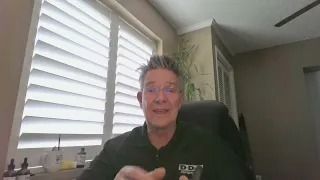No monthly PMI on a purchase with 15% down
No monthly pmi on a purchase with 15% down
If you are not familiar with Private Mortgage Insurance (PMI), it is a type of insurance that protects the lender if you stop making payments on your loan.
When you get a traditional mortgage and put a low downpayment like 5 or 10% you are required to carry PMI.
In the past, you had to put at least 20% down to avoid PMI. Now, some lenders are offering no PMI with 15% down. I'm not talking about lender paid PMI, this is different.
I have an investor that until the end of the year on purchases with 700 credit score or greater will go ahead and eat the PMI. They will give you the most competitive rate without having any monthly PMI payment, and that's at 15% down.
We've talked about in previous blogs where if you put five or ten percent down, you can get the lender to pay the PMI and the rate's much higher. You don't have to worry about a higher rate in this particular instance.
Remember, if you have private mortgage insurance, a 700 credit, score, and 15% down, you won't have to pay PMI, and you get the best interest rate.
Start your application with us today or subscribe for more great mortgage news and updates!
Want to learn a little more about PMI? Check out this great article from the Consumer Financial Protection Bureau.
What is private mortgage insurance?
Private mortgage insurance, also called PMI, is a type of mortgage insurance you might be required to pay for if you have a conventional loan. Like other kinds of mortgage insurance, PMI protects the lender—not you—if you stop making payments on your loan.
PMI is arranged by the lender and provided by private insurance companies. PMI is usually required when you have a conventional loan and make a down payment of less than 20 percent of the home’s purchase price. If you’re refinancing with a conventional loan and your equity is less than 20 percent of the value of your home, PMI is also usually required.
How do I pay for PMI?
There are several different ways to pay for PMI. Some lenders may offer more than one option, while other lenders do not. Before agreeing to a mortgage, ask lenders what choices they offer.
The most common way to pay for PMI is a monthly premium.
- This premium is added to your mortgage payment.
- The premium is shown on your Loan Estimate and Closing Disclosure on page 1, in the Projected Payments section. You will get a Loan Estimate when you apply for a mortgage, before you agree to this mortgage.
- The premium is also shown on your Closing Disclosure on page 1, in the Projected Payments section.
Sometimes you pay for PMI with a one-time up-front premium paid at closing.
- This premium is shown on your Loan Estimate and Closing Disclosure on page 2, in section B.
- If you make an up-front payment and then move or refinance, you may not be entitled to a refund of the premium.
Sometimes you pay with both up-front and monthly premiums.
- The up-front premium is shown on your Loan Estimate and Closing Disclosure on page 2, in section B.
- The premium added to your monthly mortgage payment is shown on your Loan Estimate and Closing Disclosure on page 1, in the Projected Payments section.
Lenders might offer you more than one option. Ask the loan officer to help you calculate the total costs over a few different timeframes that are realistic for you.
What factors should I consider when deciding whether to choose a loan that requires PMI?
Like other kinds of mortgage insurance, PMI can help you qualify for a loan that you might not otherwise be able to get. But, it may increase the cost of your loan. And it doesn’t protect you if you run into problems on your mortgage—it only protects the lender.
Lenders sometimes offer conventional loans with smaller down payments that do not require PMI. Usually, you will pay a higher interest rate for these loans. Paying a higher interest rate can be more or less expensive than PMI—it depends on a number of factors, including how long you plan to stay in the home. You may also want to ask a tax advisor about whether paying more in interest or paying PMI might affect your taxes differently.
Borrowers making a low down payment may also want to consider other types of loans, such as an FHA loan. Other types of loans may be more or less expensive than a conventional loan with PMI, depending on your credit score, your down payment amount, the particular lender, and general market conditions.
You may also want to consider saving up the money to make a 20 percent down payment. When you pay 20 percent down, PMI is not required with a conventional loan. You may also receive a lower interest rate with a 20 percent down payment.
Ask lenders to show you detailed pricing for different options so you can see which option is the best deal.
Start Your Loan
with DDA todayYour local Mortgage Broker
Mortgage Broker Largo See our Reviews
Looking for more details? Listen to our extended podcast!
Check out our other helpful videos to learn more about credit and residential mortgages.





